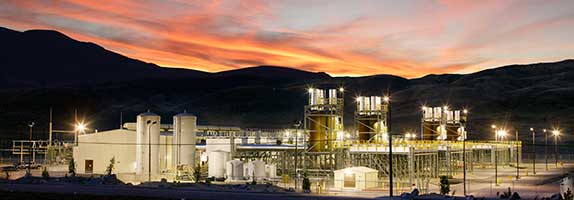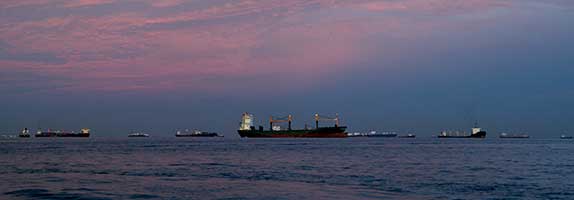


Wärtsilä has developed a detailed energy system model and an analysis on the generation of district heating in Helsinki, Finland. The model demonstrates that giving up coal and switching to district heating generated with wind electricity and heat pumps in Helsinki is economically viable and reduces carbon dioxide (CO2) emissions almost 90%.
Low-cost wind power is changing the energy industry in Finland intensely and faster than generally anticipated. The change is creating energy companies new options for generating district heating with low costs and zero emissions. Wärtsilä has created a detailed energy model and analysis of Helsinki's district heating network that studies replacing coal with both biomass boilers and several alternatives based on the electrification of district heating generation. Potential heat sources for heat pumps in the alternatives based on electrification include seawater, waste heat of data centres, and geothermal heat.
The conclusion of Wärtsilä's analysis is that the most economical solution for replacing existing coal plants is heat pumps that use wind power as their electricity source and seawater and waste heat from data centres as their heat source. Considering the variable supply of wind electricity, its utilisation in heat production can be implemented by integrating a heat storage and low-emission fast-startup gas engine power plants into the generation model, which allows optimising the generation according to the market price of electricity.
Engine power plants provide back-up power for data centres if needed, and they are used for optimising the district heating and wind power generation. In the model presented by Wärtsilä, data centres are located in closed coal plants in Hanasaari and Salmisaari in Helsinki. The undersea coal silos of Salmisaari are suitable to be converted into district heating storages.
“Our model enables examining several solutions based on numerical facts. In our analysis, we have compared alternatives based on heat pumps or burning biomass as replacement for existing coal plants. In Finland, biomass-based fuels have been traditionally considered as the best replacement for coal in district heating, but the possibility for low-cost heat through wind power significantly reduces the need for using biomass and makes giving up coal economically viable already today,” says Matti Rautkivi, Director, Strategy and Business Development, Wärtsilä Energy Business.
The savings in the production costs of district heating are over 10% compared to the current situation relying on coal, whereas a portfolio based on using primarily biomass would increase production costs roughly 9% compared to the current situation. Large seawater heat pumps are used in heat production in several locations around the world, for example in Stockholm since 1984. Waste heat from data centres is already utilised in Finland in Mäntsälä, with new projects being planned in various locations, such as Espoo. The first deep geothermal district heating plant is under construction in Otaniemi, Espoo.
Replacing coal plants with heat pumps would reduce the CO2 emissions of electricity and district heating production in Helsinki almost 90% compared to the current situation. In terms of emission reduction, this corresponds to removing over a million passenger cars from Finland's roads. The emission reduction is real because the energy model includes new wind power generation that equals the amount of electricity used by the heat pumps. CO2 emissions can be lowered even further if engine power plants switch to using biogas or synthetic gas in the future.
Image caption: Data centres as heat sources can be located in closed coal plants, such as in Salmisaari in Helsinki. Photo: Petri Pietikäinen / Vastavalo.net
Infographic: data centre utilisation in district heating
Matti Rautkivi
Director, Strategy and Business Development
Wärtsilä Energy Business
Tel. +358 40 480 3743
matti.rautkivi@wartsila.com
Mirja-Maija Santala
Manager, Marketing & Communications
Wärtsilä Energy Business
Tel: +358 400 793 827
mirja-maija.santala@wartsila.com
Wärtsilä in brief
Wärtsilä is a global leader in smart technologies and complete lifecycle solutions for the marine and energy markets. By emphasising sustainable innovation, total efficiency and data analytics, Wärtsilä maximises the environmental and economic performance of the vessels and power plants of its customers. In 2018, Wärtsilä’s net sales totalled EUR 5.2 billion with approximately 19,000 employees. The company has operations in over 200 locations in more than 80 countries around the world. Wärtsilä is listed on Nasdaq Helsinki.
www.wartsila.com
Wärtsilä Energy Business in brief
Wärtsilä Energy Business is leading the transition towards a 100% renewable energy future. As an energy system integrator, we understand, design, build and serve optimal power systems for future generations. Wärtsilä’s solutions provide the needed flexibility to integrate renewables and secure power system reliability. Our offering comprises engine-based flexible power plants – including liquid gas systems – hybrid solar power plants, energy management systems and storage and integration solutions. We support our customers over the lifecycle of their installations with services that enable increased efficiency and guaranteed performance. Wärtsilä has 70 GW of installed power plant capacity in 177 countries around the world.
www.wartsila.com/energy